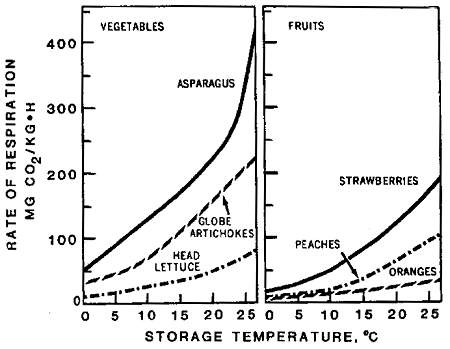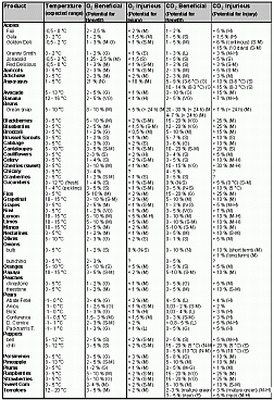 |
| Table 15: Various respiration types in fruits (glycolysis always predominates) |
The correct atmosphere will slow respiration in the fruit (see table 15), thus ensuring longer storage life. Fruit respiration can be reduced by around 30 - 60% in comparison with normal atmospheric conditions with CA. This, of course, means that transport times can be extended, so that fruit, for instance, that is normally transported by air can also be transported by sea in refrigerated containers. Another possibility is to harvest the fruit later and hence achieve better quality fruit.
Figure 51 shows the effect of temperature on respiration for a number of different types of fruits and vegetables. The effects of changing the atmosphere must then be added to this.
 |
| Figure 51: The effects of temperature on respiration |
 Click on the table to enlarge. |
 Click on the table to enlarge. |
| Table 16: Respiration of fruit and vegetables | Table 17: Recommended CA conditions for fruit and vegetables |
Table 16 shows the respiratory activity of a large number of types of fruit and vegetables at various temperatures and normal atmospheric conditions. These can be used as guideline values when designing CA containers. Incorrect atmospheric composition can, however, also damage the products. If the oxygen content is too low or the carbon dioxide content too high, the fruit can be permanently damaged. In addition, it is necessary to ensure that ethylene, which is generated by fruit and accelerates ripening, is removed from the atmosphere.
Table 17 shows typical CA conditions for various fruit and vegetables. The critical values at which the oxygen content is too low and the carbon dioxide content is too high are also given.